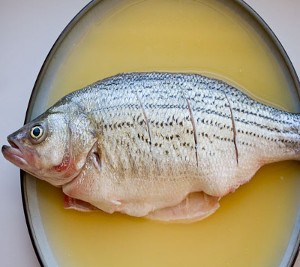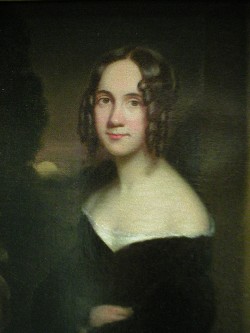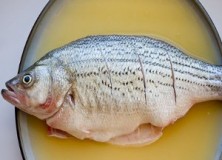 In blaring contrast to what we were taught as children and the elementary school plays presented to parents, it’s more likely that goose or duck was part of the original Thanksgiving meal, than was the turkey. Water fowl were far more abundant in the area, as were other more readily available food, such as fish and deer
In blaring contrast to what we were taught as children and the elementary school plays presented to parents, it’s more likely that goose or duck was part of the original Thanksgiving meal, than was the turkey. Water fowl were far more abundant in the area, as were other more readily available food, such as fish and deer
The only known reference to birds being part of the Pilgrim feast in 1621 was a single letter written about the event by pilgrim Edward Winslow, who mentioned beef and fowl were prepared. They were probably mentioned because of the rarity of having both for a meal. After all, who would brag about eating fish, deer, and rabbit when you have it every day.
The exact type of fowl was never mentioned, but considering that getting close enough to a turkey and killing one with a far from accurate musket was not an easy feat, it would have been much easier to shoot a floating water fowl from the cover of shoreline reeds, than an intelligent and wary turkey in the woods.
That first feast would have also required far more than just a few turkeys and they would have been needed to be bagged quickly, because the Wampanoag Indians were never “invited” to join the feast. The warriors showed up unexpectedly in force when the pilgrims, in a display of power, began shooting their muskets and cannon continuously that morning. The Wampanoag were intent on answering the challenge of power with sheer numbers and at that time the pilgrims were greatly outnumbered by the Native Americans in the area.
The pilgrims quickly realized their error and invited the Wampanoag to eat with them as a gesture of continued, albeit tenuous, friendship. The feast lasted three days. Fresh meat eventually had to be provided by a few of the Wampanoag, who quickly hunted and returned with 5 deer.
There was no pumpkin pie, or potatoes either. They hadn’t been introduced to the New England area yet. It’s likely wild squash was on the menu, as it was written to be a favorite of the pilgrims, who filled it with greens before cooking it over an open fire.
The pilgrims also never referred to it as, “Thanksgiving.” It was a festival of sorts for having grown enough food that year (with the help of the Wampanoag, who showed them how) to be able to survive the coming winter, thus ensuring the colony’s survival for another year. The abundance of grown food allowed them to have a feast before winter set in.
A single day of Thanksgiving was introduced by George Washington on November 26, 1789 for that one year, but it was not founded on the idea of the pilgrims first feast. It was intended to be a day of thanks to God for victory over England and good fortune.
Fast forward almost 200 years from the pilgrims feast for Thanksgiving to begin its journey from a forgotten gathering to a National holiday.
 An American writer, Sarah Josepha Hale, who wrote the nursery rhyme, Mary Had A Little Lamb, was inspired by a diary of pilgrim life, to recreate the first Thanksgiving feast. In 1827 she began a 30-year campaign to make George Washington’s Thanksgiving Day a National holiday. She published recipes for turkey, pumpkin pie, mashed potatoes, and stuffing. With the exception of a possibly blandly seasoned bread dish, none of her recipes or items would have been found at the original feast.
An American writer, Sarah Josepha Hale, who wrote the nursery rhyme, Mary Had A Little Lamb, was inspired by a diary of pilgrim life, to recreate the first Thanksgiving feast. In 1827 she began a 30-year campaign to make George Washington’s Thanksgiving Day a National holiday. She published recipes for turkey, pumpkin pie, mashed potatoes, and stuffing. With the exception of a possibly blandly seasoned bread dish, none of her recipes or items would have been found at the original feast.
In 1863, as the Civil War raged, Abraham Lincoln announced that the fourth Thursday of every November forward would be recognized as a day of Thanksgiving, mostly due to the effort of Sarah Hale.Though she didn’t live to see it as an officially recognized National holiday, her efforts made the day honored and molded the pilgrim myth, including the non-present foods, into what people believe today.
Sarah Josepha Hale died in 1879. It would take 62 more years for Thanksgiving to become a National holiday.
The Northern population adopted Sarah Hale’s recipes, including using turkey if it were available to them. Not surprisingly, Thanksgiving was slow to catch on in the South, even after the Civil War ended. Southerners viewed it as the North imposing their will upon them.
Even though Abraham Lincoln declared the last Thursday in November to be the day for Thanksgiving, it would take a mistake of a future President and an Act of Congress to correct that mistake, and in correcting it, making it an officially recognized National holiday.
In 1939, Franklin D. Roosevelt moved Thanksgiving up one week in order to extend retail sales time for the upcoming Christmas season, thus stimulating the economy. His move wasn’t liked by the public. Some people celebrated Thanksgiving on the third Thursday, others on the fourth Thursday, and some on both Thursdays, just to be sure. Most felt the change broke the tradition set by a revered President, Abraham Lincoln. The media called it, “Franksgiving.”
Congress corrected the confusion by fixing Thanksgiving to the last Thursday in November. The Bill was presented to Roosevelt and upon his signing it into law, it finally became an officially recognized holiday of the United States.
By this time, turkey had exceeded all other forms of the main course on a Thanksgiving dinner table, quickly overtaking the more readily available beef. It was the largest fowl native to the United States and was often reserved as the “special” meal for the holiday. Turkey had already begun to be raised on farms in ever larger numbers to meet demand and while they still bear a resemblance to their wild cousins, domestic turkeys are larger, tastier, and have all white feathers for better skin appearance. Domestic turkeys are also unable to fly, unlike their wild counterparts.
Today, it’s estimated that around 45 million turkeys are purchased in the United States for a Thanksgiving feast.
Only one or two of the turkeys raised for cooking never see the inside of an oven.
In 1989, George H.W. Bush began the tradition of “pardoning” a turkey. Since then, every sitting President has granted a reprieve to one or two turkeys every Thanksgiving.
So, remember Sarah Josepha Hale this Thanksgiving when you eat the modern version of your holiday meal. Her belief that the turkey was served by the pilgrims and providing recipes for side dishes that didn’t exist at the time, is why you aren’t tempting ducks out of local ponds and eating hollowed squash filled with spinach and turnip greens.
Disclaimer: On January 4, 2016, the owner of WestEastonPA.com began serving on the West Easton Council following an election. Postings and all content found on this website are the opinions of Matthew A. Dees and may not necessarily represent the opinion of the governing body for The Borough of West Easton.







